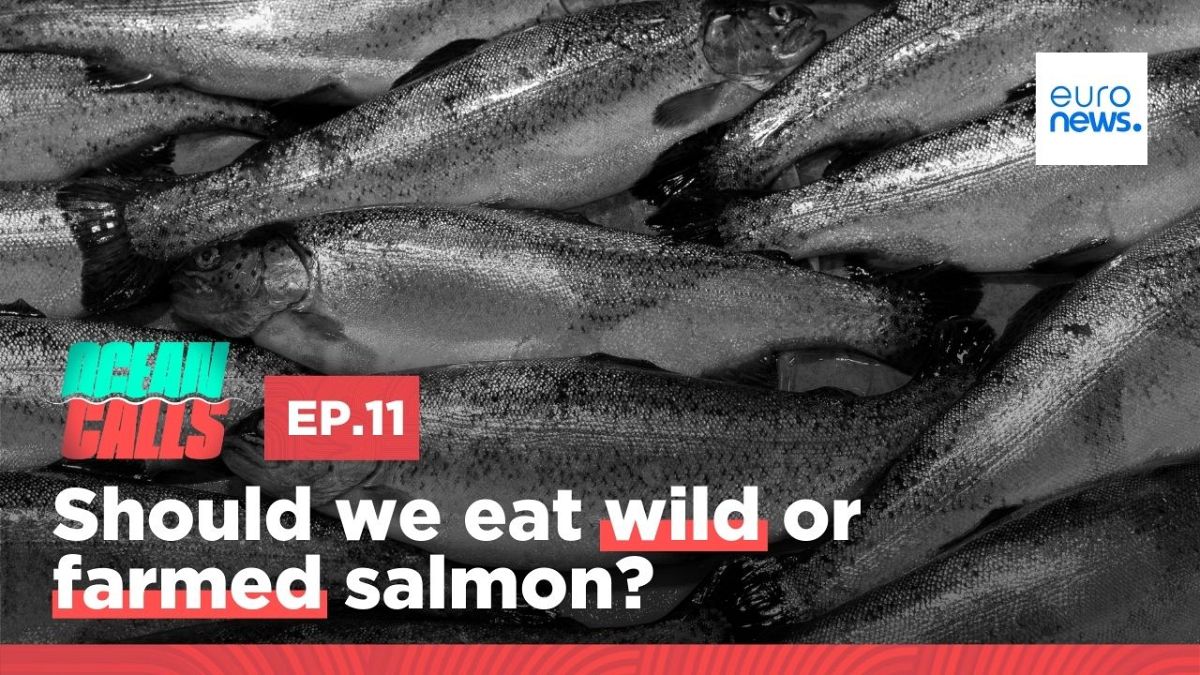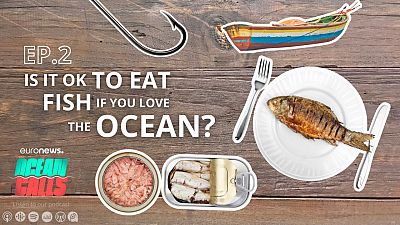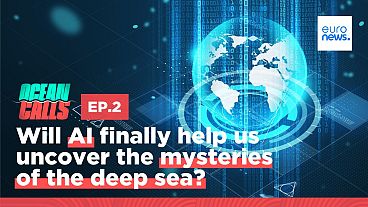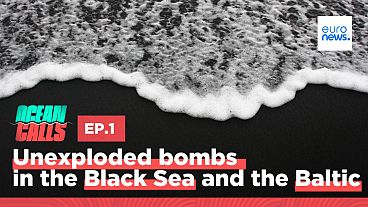Salmon is a wonderful fish – not only is it delicious, but it’s also packed with nutrients. But the Atlantic salmon that we can find here in Europe is also an endangered species. So for us as consumers, what is a more sustainable choice: wild or farmed salmon?
Salmon is a wonderful fish, packed with nutrients and loved for its tender meat, making it the second most consumed fish in the European Union after tuna.
Overfishing, farmed fish escapes, and climate change mean that populations of wild salmon have decreased drastically over the last fifty years, with some species like the Atlantic salmon listed as endangered.
“Unfortunately at this stage, the stocks of wild salmon are now very, very low,” explains Ken Whelan, a senior advisor at the Atlantic Salmon Trust in this episode of Ocean Calls.
“Our best estimate at the moment is [that there are] probably less than 3 million wild Atlantic salmon in the ocean”.
In this episode of Ocean Calls, we’re exploring which type of salmon is the most sustainable choice for our dinner plates: wild or farmed?
Can aquaculture be sustainable?
Very few European fisheries have quotas to catch wild salmon, and in the EU, 94% of these fish are farmed. For comparison, almost all of the cod and tuna on sale is caught in the wild.
“It is an industry. In 2021, Norway exported 1.6 million tons of salmon,” replies Åsa Maria Espmark, a senior scientist specialising in fish welfare at Norwegian food research institute Nofima.
Salmon aquaculture is heavily criticised for being unsustainable, risking the health and welfare of both farmed and wild animals.
According to Whelan, the two big challenges of salmon farming are sea lice and cross-breeding, which can occur between wild and farmed species if the fish escape.
“The genetic traits that the wild salmon populations have developed over 10,000 years can be very seriously damaged if they crossbreed with the fish that have been reared to live in a cage,” he asserts.
And while sea lice can be found in the wild, they are much more successful in overcrowded farms.
“Sea lice are a really serious issue in terms of the damage that they can do,” says Whelan.
Espmark stresses that the Norwegian industry has developed several ways to fight these parasites by either removing the lice or keeping the fish further away from open seas.
“And we prefer the second [option]”, explains Espmark, “because the first one means you have to crowd and pump the fish a lot. And this causes welfare issues for the farmed fish.”
Whelan agrees that the new aquaculture technology and innovations are “breathtaking”, but to him, the mass production of salmon is a real threat to the survival of these species.
“We're setting ourselves these enormous industrial targets based around a situation where we're using nature. And I think that's a real difficulty,” he says.
Espmark argues that the goal of salmon aquaculture is the production of food and the key to sustainability is proper management.
“If you want the world population to eat salmon, as it is one of the healthiest fish species that we have, you cannot take them from the wild.”
The Ocean Calls podcast is made possible by the European Commission's Directorate-General for Maritime Affairs and Fisheries.
In this episode of Ocean Calls we used "Turn The World Into A Dancefloor”. Performed by Armin van Buuren. Courtesy of Armada Music B.V.









